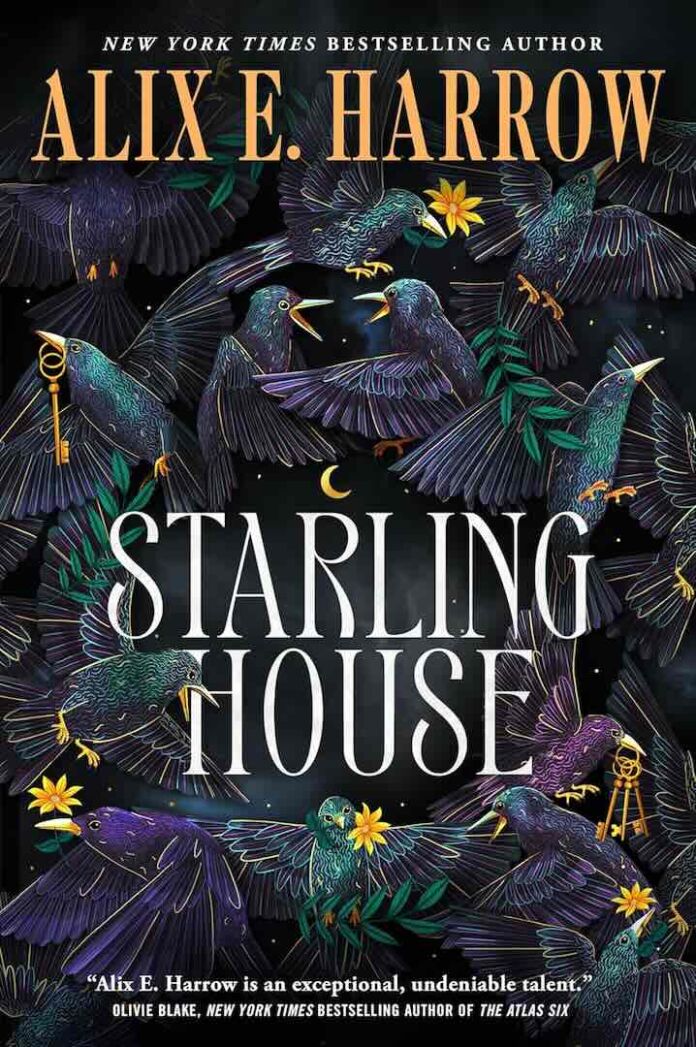Where Dreams and Nightmares Converge
There’s something irresistible about haunted house stories that keep drawing us back, like moths to a ghostly flame. But in Alix E. Harrow’s latest novel, Starling House, the haunting isn’t just in the creaking floorboards or shadowy corners—it’s woven into the very fabric of a town’s painful history, buried beneath layers of collective guilt and willful forgetfulness. This mesmerizing blend of Gothic romance, social commentary, and supernatural horror proves that sometimes the most terrifying ghosts are the ones we create ourselves.
A Fresh Take on Gothic Romance
In the tradition of Mexican Gothic by Silvia Moreno-Garcia and The Death of Jane Lawrence by Caitlin Starling, Harrow crafts a story that honors Gothic conventions while subverting them in surprising ways. The brooding hero, the mysterious house, the dark family secrets—they’re all here, but viewed through a distinctly modern lens that examines issues of class, race, and environmental justice.
Story and Structure
Plot Overview
The story follows Opal, a sharp-tongued survivor scraping by in Eden, Kentucky, as she takes a housekeeping job at the infamous Starling House. The house’s sole inhabitant, Arthur Starling, is the last in a line of “Wardens” protecting the town from supernatural forces that emerge from an underworld beneath the house. As Opal uncovers the truth about the house’s first owner, Eleanor Starling, and her connection to the powerful Gravely family, she must decide whether to flee or fight for the first place that’s ever felt like home.
Character Development
Harrow excels at creating complex, flawed characters who feel achingly real. Opal’s fierce determination to protect her brother Jasper while maintaining her independence makes her a compelling protagonist. Her gradual transformation from survivor to protector is beautifully rendered. Arthur Starling could have been a one-note Gothic hero, but instead emerges as a nuanced character struggling with inherited trauma and responsibility.
Strengths and Notable Elements
Rich Prose and Imagery
Harrow’s writing is a feast of sensory details and evocative metaphors. Consider this description: “The House feels like a mere house, a dead structure that hasn’t yet learned how to dream.” Her ability to make the familiar strange and the strange familiar is remarkable.
Layered Themes
- The nature of home and belonging
- The weight of inherited trauma
- The power of stories to both heal and harm
- Environmental justice and corporate responsibility
- The complexity of family ties
Atmospheric World-Building
Eden, Kentucky, feels lived-in and authentic, with its complex web of relationships and long-held grudges. The supernatural elements are seamlessly integrated into the town’s history, making the fantastic feel credible.
Areas for Improvement
Pacing Issues
The middle section of the novel occasionally drags, with some repetitive internal monologues that could have been trimmed. The final act, while thrilling, feels slightly rushed in comparison.
Secondary Character Development
While the main characters are well-drawn, some secondary characters, particularly the corporate villains, verge on caricature. A more nuanced portrayal might have added additional depth to the story’s themes.
Plot Resolution
Some readers might find certain plot threads tied up too neatly, particularly regarding the environmental crisis that threatens the town. The resolution, while satisfying emotionally, occasionally strains credibility.
Comparison to Previous Works
Fans of Harrow’s previous novels (The Ten Thousand Doors of January, The Once and Future Witches) will recognize her talent for weaving together intimate character stories with larger social themes. However, Starling House feels more focused and personal than her earlier works, with a tighter plot and more concentrated emotional impact.
Impact and Relevance
What makes Starling House particularly compelling is its exploration of how communities deal with historical trauma. The novel asks hard questions about responsibility, redemption, and the price of willful ignorance. These themes resonate strongly in our current moment of historical reckoning.
Writing Style and Technical Merit
Harrow’s prose is both literary and accessible, with a distinctive voice that manages to be both poetic and sharp-edged. Her handling of multiple timelines and narratives is skillful, though occasionally the transitions between past and present could be smoother.
Final Verdict
What Works Beautifully
- The complex, evolving relationship between Opal and Arthur
- The house as a character in its own right
- The intricate weaving of supernatural and historical elements
- The exploration of family dynamics and inherited trauma
- The atmospheric setting and rich world-building
What Could Be Better
- Pacing in the middle section
- Development of antagonists
- Some plot resolution elements
Recommendations
Starling House is highly recommended for readers who enjoy:
- Gothic romance with a contemporary edge
- Stories about found family and belonging
- Social commentary mixed with supernatural elements
- Complex female protagonists
- Atmospheric, character-driven narratives
While not perfect, Starling House is a compelling addition to the modern Gothic canon that will leave readers thinking long after they turn the final page. It’s a ghost story that reminds us that sometimes the most haunted places are the ones we call home.
For fans of: Mexican Gothic, The Haunting of Hill House, Catherine House, and Plain Bad Heroines.





